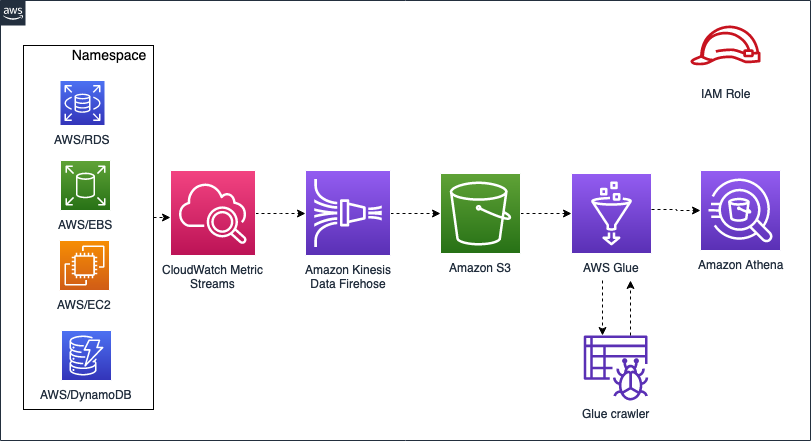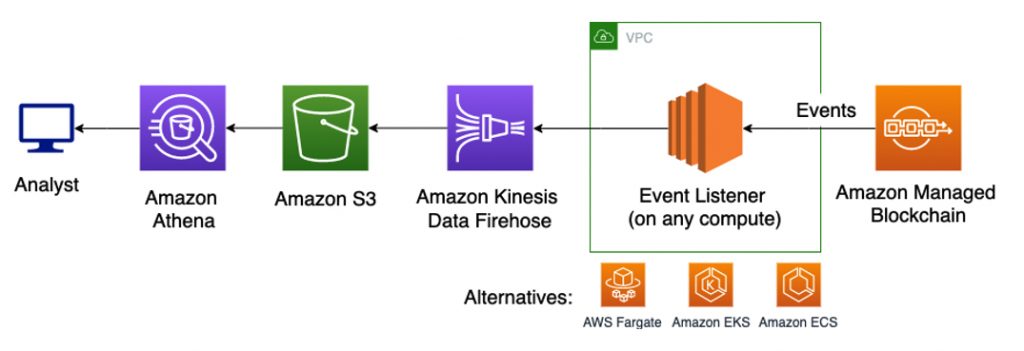AWS Database Blog
Category: Amazon Athena
Turn petabytes of relational database records into a cost-efficient audit trail using Amazon Athena, AWS DMS, Amazon RDS, and Amazon S3
In this post, we show how you can use AWS Database Migration Service (AWS DMS) to migrate relational data from Amazon RDS into compressed archives on Amazon S3. We discuss partitioning strategies for the resulting archive objects and how to use S3 Object Lock to protect the archive objects from modification. Lastly, we demonstrate how to query the archive objects using SQL syntax through Athena with seconds latency, even on large datasets.
Create a Virtual Knowledge Graph with Amazon Neptune and an Amazon S3 data lake
It’s common in an enterprise for data that logically fits together to be separated into different databases. Some data is better suited for one storage than another, and it may not be feasible to locate all your data in one data store. But this data often needs to be linked back together to provide a […]
Joining historical data between Amazon Athena and Amazon RDS for PostgreSQL
While databases are used to store and retrieve data, there are situations where applications should archive or purge the data to reduce storage costs or improve performance. However, there are often business requirements where an application must query both active data and archived data simultaneously. Developers need a solution that lets them benefit from using […]
Writing results from an Athena query to Amazon DynamoDB
Many industries are taking advantage of the Internet of Things (IoT) to track information from and about connected devices. One example is the energy industry, which is using smart electricity meters to collect energy consumption from customers for analytics and control purposes. Vector, a New Zealand energy company, combines its energy knowledge with Amazon Web […]
Export and analyze Amazon QLDB journal data using AWS Glue and Amazon Athena
Amazon Quantum Ledger Database (Amazon QLDB) is a fully managed ledger database that maintains a complete, immutable record of every change committed to the database. As transactions are committed to the database, they are appended to a transaction log called a journal and are cryptographically hash-chained to the previous transaction. Once committed, the record of […]
Access Bitcoin and Ethereum open datasets for cross-chain analytics
In this post, we share an open-source solution for running cross-chain analytics on public blockchain data along with public datasets for Bitcoin and Ethereum available through AWS Open Data. These datasets are still experimental and are not recommended for production workloads. You can find the open-source project on GitHub here and the public blockchain datasets […]
Build interactive graph data analytics and visualizations using Amazon Neptune, Amazon Athena Federated Query, and Amazon QuickSight
Customers have asked for a way to interact with graph datasets in Amazon Neptune using business intelligence (BI) tools such as Amazon QuickSight. Although some BI tools offer generic HTTP connectors that allow you to define a set of REST API calls to extract data from REST endpoints, you have to predefine either Gremlin or […]
Analyze database performance with Amazon CloudWatch metric streams
February 9, 2024: Amazon Kinesis Data Firehose has been renamed to Amazon Data Firehose. Read the AWS What’s New post to learn more. With the announcement of Amazon CloudWatch Metric Streams, you can now stream near-real-time metrics data to a destination such as Amazon Simple Storage Service (Amazon S3). Metric Streams supports two primary use […]
Export and analyze Amazon DynamoDB data in an Amazon S3 data lake in Apache Parquet format
January 2023: Please refer to Accelerate Amazon DynamoDB data access in AWS Glue jobs using the new AWS Glue DynamoDB Export connector for more recent updates on using Amazon Glue to extract data from Amazon DynamoDB. Amazon DynamoDB is a key-value and document database that delivers single-digit millisecond performance at any scale. It’s a fully […]
Performing analytics on Amazon Managed Blockchain
Managed Blockchain follows an event-driven architecture. We can open up a wide range of analytic approaches by streaming events to Amazon Kinesis. For instance, we could analyze events in near-real time with Kinesis Data Analytics, perform petabyte scale data warehousing with Amazon RedShift, or use the Hadoop ecosystem with Amazon EMR. This allows us to use the right approach for every blockchain analytics use case.
In this post, we show you one approach that uses Amazon Kinesis Data Firehose to capture, monitor, and aggregate events into a dataset, and analyze it with Amazon Athena using standard SQL.









